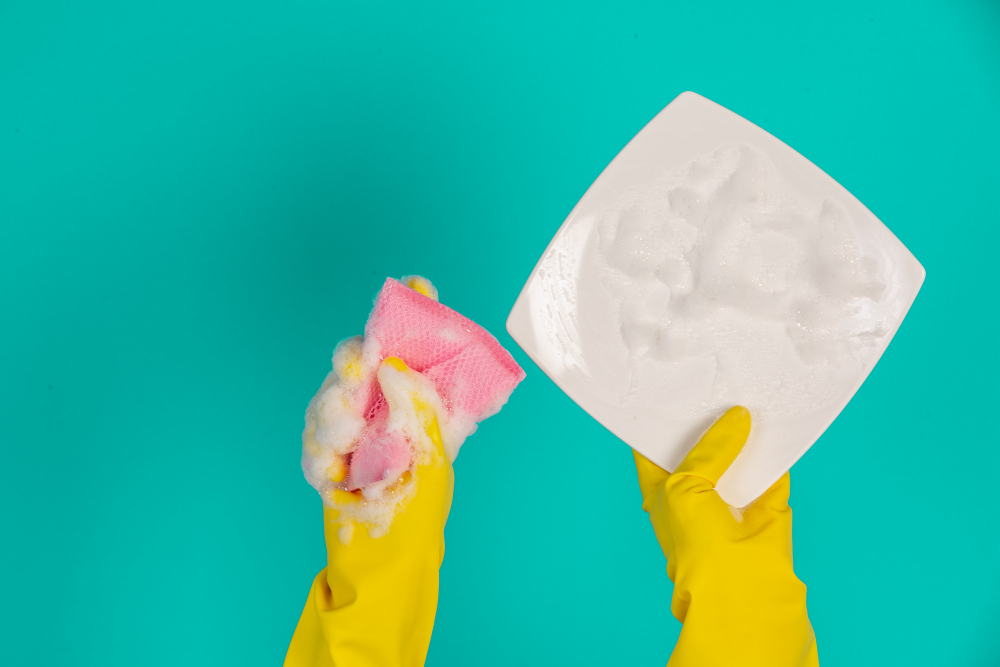Keeping your kitchen utensils clean and sanitized is essential for maintaining a safe and hygienic cooking environment. Whether you’re a seasoned chef or a novice cook, understanding the correct order of steps for cleaning and sanitizing utensils by hand is crucial for preventing cross-contamination and ensuring food safety. Let’s unravel the mysteries of cleanliness and delve into the proper techniques for washing and sanitizing utensils like a pro.
Gather Your Tools and Supplies
Before diving into the cleaning process, it’s essential to gather all the necessary tools and supplies to ensure a smooth and efficient workflow. Start by assembling your dirty utensils, dish soap, a clean sponge or brush, a sink or basin filled with hot, soapy water, and a separate basin filled with sanitizing solution. Make sure your sink or basin is clean and free of any food debris or residue to prevent cross-contamination.
Removing Food Debris
The first step in cleaning utensils by hand is to scrape off any remaining food debris or residue. Use a spatula or scraper to remove solid particles from plates, pots, pans, and utensils, and discard them in the trash or compost bin. Once the larger debris has been removed, rinse the utensils under running water to further loosen any remaining food particles and prepare them for washing.
Applying Soap and Water
With your utensils prepped and ready, it’s time to wash away any lingering dirt and grease with soap and water. Fill your sink or basin with hot water and add a generous amount of dish soap to create a sudsy solution. Place your utensils in the soapy water and use a clean sponge or brush to scrub them thoroughly, paying special attention to areas with stubborn stains or residue. Rinse the utensils under running water to remove any soap residue and ensure they are clean and sparkling.
Killing Germs and Bacteria
Once your utensils are clean, it’s time to sanitize them to kill any remaining germs and bacteria. Fill a separate basin with a sanitizing solution made from a mixture of water and bleach or a commercial sanitizing agent. Submerge your utensils in the sanitizing solution and allow them to soak for the recommended amount of time, typically one to two minutes. Ensure that all surfaces of the utensils are fully immersed in the sanitizing solution to ensure thorough disinfection.
Allowing for Proper Drying Time
After sanitizing, it’s important to allow your utensils to air dry completely before storing them away. Place the sanitized utensils on a clean drying rack or towel, ensuring that they are arranged in a single layer to promote airflow and prevent moisture buildup. Avoid drying utensils with a cloth or towel, as this can reintroduce bacteria and germs. Allow the utensils to air dry naturally for at least 30 minutes to ensure they are completely dry before use.
Checking for Cleanliness
Before storing your utensils away, take a moment to inspect them for cleanliness and ensure that they are free of any visible residue or spots. Use a clean towel or cloth to wipe away any remaining moisture and polish the utensils to a shine. Once you’re satisfied that the utensils are clean and dry, store them in a clean, dry cabinet or drawer away from potential contaminants and moisture.
Preventing Contamination
Finally, to maintain a safe and hygienic kitchen environment, it’s important to establish regular cleaning practices and adhere to them consistently. Make it a habit to clean and sanitize your utensils after each use, as well as your countertops, cutting boards, and other kitchen surfaces. By following the correct order of steps for cleaning and sanitizing utensils by hand, you can ensure that your kitchen remains a safe and inviting space for cooking and dining.



